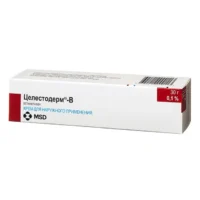Description
Levomecol Ointment 40 g Tube
Ingredients:
- Levomecol ointment contains two active ingredients: chloramphenicol and methyluracil. Chloramphenicol is an antibiotic that stops bacterial growth, while methyluracil stimulates tissue repair processes.
Dosage:
- Apply a thin layer of Levomecol ointment to the affected area 1-3 times a day as directed. Do not exceed the recommended dose.
Indications:
- Levomecol ointment is used to treat infected wounds, burns, cuts, and skin infections. It prevents bacterial growth and aids in wound healing.
Contraindications:
- Avoid Levomecol ointment if allergic to chloramphenicol or any other ingredients. Consult a healthcare provider before use.
Directions:
- Clean the affected area before applying Levomecol ointment. Wash hands before and after application. Avoid contact with eyes or mouth.
Scientific Evidence:
- Studies indicate that the chloramphenicol and methyluracil combination in Levomecol ointment synergistically treats skin infections and enhances wound healing. Research in the International Journal of Dermatology highlights chloramphenicol’s efficacy against various bacterial strains.
Additional Information:
- Adhere to prescribed dosage and treatment duration for optimal results with Levomecol ointment. If symptoms worsen or do not improve, seek further evaluation from a healthcare provider.
- Levomecol ointment inhibits bacterial growth and promotes tissue repair, making it effective for skin infections and wounds. Clinical trials demonstrate its success in reducing infection and speeding up healing compared to other topical antibiotics.




